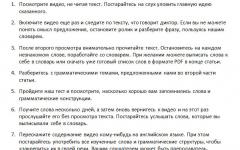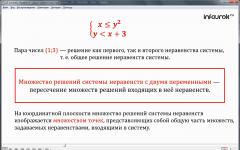Introduction
We are committed to respecting the personal information of visitors to our site. This Privacy Policy explains some of the measures we take to protect your privacy.
Confidentiality of personal information
“Personal Information” means any information that can be used to identify an individual, such as name or email address.
Use of private information.
Personally identifiable information collected through our site is used by us, among other things, for the purposes of registering users, maintaining and improving our site, tracking policies and site usage statistics, and for purposes authorized by you.
Disclosure of private information.
We employ other companies or are affiliated with companies that provide services on our behalf, such as processing and delivering information, posting information on this site, delivering content and services provided by this site, performing statistical analysis. To enable these companies to provide these services, we may share personal information with them, but they will only be permitted to receive the personal information they need to provide the services. They are required to keep this information confidential and are prohibited from using it for other purposes.
We may use or disclose your personal information for other reasons, including if we believe it is necessary to comply with the law or court orders, to protect our rights or property, or to protect the personal safety of users of our site or members of the general public. , to investigate or take action regarding illegal or suspected illegal activity, in connection with a corporate transaction such as a divestiture, merger, consolidation, sale of assets or in the unlikely event of bankruptcy, or for other purposes consistent with your consent.
We will not sell, rent or lease our user lists with email addresses to third parties.
Access to personal information.
If, after providing information to this site, you decide that you do not want your personal information used for any purpose by contacting us at the following address: [email protected].
Our Practices Regarding Non-Personal Information.
We may collect non-personal information about your visit to the site, including the pages you view, the links you click, and other activities in connection with your use of our site. In addition, we may collect certain standard information that your browser sends to any website you visit, such as your IP address, browser type and language, time spent on the site, and the address of the website in question.
Use of bookmarks (cookies).
A cookie is a small text file placed on your hard drive by our server. Cookies contain information that can later be read by us. No data collected by us in this way can be used to identify a visitor to the site. Cookies cannot be used to run programs or infect your computer with viruses. We use cookies to monitor the use of our site, collect non-personal information about our users, store your preferences and other information on your computer in order to save you time by eliminating the need to repeatedly enter the same information, and to displaying your personalized content on your subsequent visits to our site. This information is also used for statistical studies aimed at adjusting content according to user preferences.
Aggregated information.
We may combine in a non-identifiable format the personal information you provide and the personal information provided by other users, thereby creating aggregate data. We plan to analyze aggregated data primarily for the purpose of tracking group trends. We do not link aggregated user data to personally identifiable information, so aggregated data cannot be used to contact or identify you. Instead of using actual names, we will use usernames during aggregate data creation and analysis. For statistical purposes and to track group trends, anonymous, aggregated data may be provided to other companies with whom we interact.
Changes to this Privacy Statement.
We reserve the right to make changes or additions to this Privacy Policy, in part or in full, from time to time. We encourage you to periodically review our Privacy Policy to stay informed about how we protect your personal information. The most current version of the Privacy Policy can be viewed by clicking on the "Privacy Policy" hypertext link located at the bottom of the home page of this site. In many cases, when we make changes to the Privacy Policy, we will also change the date at the beginning of the Privacy Policy, but we may not provide you with other notice of changes. However, if there are material changes, we will notify you either by prominently posting a prior notice of such changes or by directly sending you notice at email. Your continued use of and access to this site constitutes your acceptance of such changes.
Contact us. If you have any questions or concerns about our privacy statement, please contact us at the following address: [email protected].
Compound:- pancreatic casein hydrolysate,
- meat peptone,
- yeast extract,
- lithium chloride,
- sodium chloride,
- sodium carbonate,
- SD (polymyxin B sulfate, nalidixic acid, acriflavine).
The drug in the amount required for the preparation of a specific series of PBL medium must be completely dissolved in 1 liter of distilled water when boiled and stirred for 3 minutes. SD should be dissolved in 5 ml of distilled water with stirring for 1 minute. The presence of white sediment is allowed.
The PBL medium solution after boiling, filtration and sterilization should be transparent light brown. Slight opalescence is allowed. The SD solution should be transparent orange in color.
The nutrient medium with SD must ensure the growth of test strains Listeria monocytogenes 766 and Listeria ivanovi in all inoculated test tubes when 0.1 ml of microbial suspension is inoculated into 10 ml of medium from a dilution of 10-7 (about 10 m.c.) no later than 48 hours of incubation at a temperature of 30°C in the form of cloudiness of the medium, when shaken, moiré waves are observed.
The nutrient medium with SD should completely suppress the growth of test strains Escherichia coli ATCC 25922, Proteus vulgaris HX 19 222 and Staphylococcus aureus Wood-46 in all inoculated test tubes when 0.1 ml of microbial suspension is inoculated into 10 ml of medium from a dilution of 10-4 ( 10,000 mk) after 48 hours of incubation at 30°C.
pH: 6.8 to 7.2
Amine nitrogen: 2.9 to 3.5%
Chlorides (in terms of sodium chloride): from 20.0 to 28.0%
Weight loss during drying: no more than 7.0%
INSTRUCTIONS for using a set of reagents for bacteriological research “Nutritional broth for the isolation of Listeria Sreda PBL Obolensk”
Set of reagents for bacteriological research " Nutritious broth for the isolation of Listeria (Sreda PBL Obolensk)" is intended for the isolation of Listeria from clinical material and food products during bacteriological studies.
The reagent set consists of one jar with PBL medium and 5 bottles with a selective additive (SD).
PBL Obolensk medium is a finely dispersed hygroscopic powder of light yellow color.
SD is a fine pink powder. The powder is hygroscopic and photosensitive.
PBL Obolensk medium is produced in polyethylene jars of 250 g, SD in bottles of
0.045 g.
2.1. Operating principle
The nutrient medium provides optimal conditions for the growth of listeria. Inhibitors suppress the growth of accompanying microflora.
2.2. Compound
PBL Obolensk medium is a mixture of dry components at the rate, g/l:
SD composition, g:
Determination of pH is carried out by the potentiometric method using a glass electrode in accordance with MUK 4.2.2316-08 “Methods for monitoring bacteriological nutrient media"in an extract prepared by adding 100 ml of distilled water to 2.00 g of dry PBL medium, infusing with periodic stirring for 1 hour at a temperature of 18 - 25 ° C and then filtering through a paper filter.
The pH value determined according to MUK 4.2.2316-08 is a conditional value that corresponds to the pH value ready environment and may change slightly after sterilization. The pH value limits stated above take into account variations in pH after sterilization of the medium.
Specific activity. The nutrient medium with SD ensures the growth of test strains in all inoculated test tubes Listeria monocytogenes 766 And Listeriaivanovi when inoculating 0.1 ml of microbial suspension in 10 ml of medium from a dilution of 10 -7 (about 10 m.k.) no later than 48 hours of incubation at a temperature of 30 ° C in the form of turbidity of the medium, when shaking, moiré waves are observed.
Inhibitory properties. The nutrient medium with SD completely suppresses the growth of test strains in all inoculated test tubes Escherichia coliATCC 25922, Proteus vulgaris HX 19 222 And Staphylococcus aureusWood-46 when inoculating 0.1 ml of microbial suspension into 10 ml of medium from a dilution of 10 -4 (10,000 m.c.) after 48 hours of incubation at a temperature of 30 °C.
Environment PBL Obolensk refers to medical devices with low individual risk and low risk for public health– class 1.
- Thermostat providing a temperature of 30 °C
- Laboratory scales 2 accuracy classes
- Autoclave
- Glass pipettes, allowing you to withdraw liquid volumes of 1 and 2 ml
- Glass measuring cylinder with a capacity of 1000 ml
- Test tubes
- Distilled water
- Flasks
- Glass funnels
6.1. Objects of research in clinical, sanitary and food microbiology.
6.2. Taking, inoculating and storing the test material is carried out in accordance with
GOST R 51921-2002 “Food products. Methods for identifying and identifying bacteria Listeria monocytogenes", MUK 4.2.1122-02 "Organization of control and methods for identifying bacteria Listeria monocytogenes in food products", " Methodological recommendations on laboratory diagnosis of listeriosis in animals and humans" and other regulatory documents.
The study is carried out in a bacteriological laboratory by medical specialists who have permission to work with microorganisms of III-IV pathogenicity groups.
7.1. Preparation of PBL medium.
33.5 g of the drug is thoroughly mixed in 1 liter of distilled water, boiled for 2 minutes, filtered through a cotton gauze filter and sterilized in an autoclave at a temperature of 121 ° C for 15 minutes.
7.1.1 Preparation of PBL medium with a selective additive.
The contents of the bottle with the selective additive are dissolved in 5 ml of distilled water, mixed thoroughly and added to a sterile PBL medium cooled to a temperature of 50-55 ° C at the rate of 2.2 ml per 1 liter of medium for preparing the pre-enrichment medium and 4.4 ml per 1 l enrichment medium.
The prepared medium is transparent yellow.
The prepared medium can be used for 7 days at storage temperature
2-8 °C.
After each opening and carrying out the necessary research, tightly close the jar with the medium and place it for further storage at a temperature of 2-30 ˚C.
7.2. The test material is inoculated, respectively, into the PBL medium with SD and incubated at a temperature of 30 ° C for no more than 48 hours.
The results are recorded visually no later than 48 hours of incubation of the crops at a temperature of 30 ° C. The growth of Listeria is detected in the form of cloudiness of the medium, when shaken, moiré waves are observed.
To obtain reliable results, inoculate samples in at least three replicates.
Series of PBL media that have become unusable (violation of the integrity of the packaging), as well as due to an expired shelf life, are disposed of in accordance with SanPiN 2.1.7.2790-10 as waste belonging to class “A” - epidemiologically safe waste, in any way that prevents reuse, for example by incineration.
The destruction of the PBL environment after biological control is carried out according to SanPiN 2.1.7.2790-10 as medical waste belonging to class “B” with mandatory preliminary neutralization by autoclaving for 2 hours at a temperature of (126±1) ˚C.
Treatment of medical waste should be carried out in accordance with the scheme adopted in a specific organization carrying out medical and (or) pharmaceutical activities. This scheme is developed in accordance with the requirements of the above sanitary rules and approved by the head of the organization.
The PBL medium must be stored in hermetically sealed packaging in a dry place protected from light at a temperature of 2 to 30 C and a relative humidity of no more than 60%. After opening, the jar with the medium is stored until the expiration date, tightly closed, in a dry place at a temperature of 2 to 30 C, avoiding moisture.
Materials of the II National Congress of Bacteriologists
Infection and immunity
DEVELOPMENT OF NUTRIENT MEDIA FOR ISOLATION OF LISTERIA
O.V. Polosenko, A.P. Shepelin, I.I. Marchikhina, L.P. Sholokhov
FBUNGNTs applied microbiology and biotechnology of Rospotrebnadzor, Obolensk, Moscow region
Listeriosis is considered one of the current unresolved problems health care, which is of social and economic importance due to the high mortality rate of the sick. The classical method of identifying a pathogen includes the stages of accumulation, isolation and identification. In Russia, GOST 32031-2012 “Food products. Methods for identifying bacteria L. monocytogenes”, harmonized with the international standard ISO 11290-1:1996 regarding the study and use of culture media.
The domestic industry produces nutrient media: nutrient broth and agar for the isolation of listeria (PBL and PAL). To expand the range of nutrient media for isolating listeria, UVM broth and PALKAM AGAR have been developed at the State Research Center for Medical and Biology.
The use of media such as PALCAM AGAR, containing mannitol and phenol red indicator, provides an additional opportunity to differentiate the growth of accompanying mannitol-positive microorganisms from listeria.
The composition of STICK AGAR based on pancreatic hydrolysates of casein and fish meal is superior to imported analogues in sensitivity and growth rate. After 18-20 hours of incubation when sowing 10 m.c. the medium provides visually detectable growth of listeria with blackening of the medium around the colonies, while on commercial analogues growth is observed in the form of pinpoint colonies with weak blackening. Antibiotics and lithium chloride impart high selectivity to the medium. Differentiating properties are based on the ability of Listeria to break down esculin into esculetin. On the medium, no later than 48 hours of incubation at a temperature of (37±1)°C, the growth of listeria is observed in the form of gray-green colonies with a diameter of 1.4-2.0 mm with a black zone.
The test results indicate the high selectivity of the UVM and PALKAM AGARA culture media and allow us to conclude that they can be used in the practice of bacteriological laboratories for identifying listeria from various objects.
Price: 7,709.00 RUB
You can add an item to your cart by specifying the quantity
Manufacturer: Obolensk
Country: Russia
Unit Meas.: set
Type of packaging: polyethylene jar
Article: O71
Description
Nutrient broth medium for the isolation of Listeria spp., in the form of a set of dry powder for preparing the medium and 5 bottles of selective additive. Designed to isolate the causative agent of listeriosis from food products during their bacteriological examination, clinical pathological material of humans and animals. In the form of a dry powder in a plastic bottle of 250 g, designed to prepare 7.4 liters of liquid medium
Functional purpose
Preparation of pre-enrichment (isolation) and enrichment media for the causative agent of listeriosis. The composition provides optimal conditions for the growth of listeria and suppresses the growth of accompanying microflora
SpecificationsComposition of the medium: pancreatic casein hydrolyzate, meat peptone, yeast extract, lithium chloride, sodium chloride, sodium carbonate, selective additive.
In the form of a homogeneous dry, easily soluble powder of light yellow color, photosensitive. Selective additive in the form of a fine pink powder, photosensitive.
The prepared medium is yellow-green in color and transparent.
Acidity of the medium: at 25°C it has a pH of 7.0±0.2.
The prepared medium is suitable for 7 days at a storage temperature of +2...8°C.
Release form: medium in polyethylene jars of 250 g, selective additive in bottles of 0.045 g.
Storage conditions: in hermetically sealed packaging in a dry place protected from light at a temperature of +2...30°C.
The shelf life of the powder is 2 years from the production date indicated on the packaging. The shelf life of the additive is no less than the shelf life of the medium.
Registration certificate No. FSR 2010/09161







